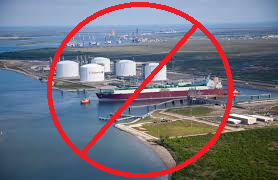What Frackers Say Behind Closed Doors
August 3, 2016Damascus Citizens Reviewing Pond Eddy Bridge Permits, Process
August 17, 2016The EPA’s Office of Research and Development (ORD) requested that the Science Advisory Board (SAB) conduct a peer review and provide advice on scientific charge questions associated with the EPA’s draft Assessment of the Potential Impacts of Hydraulic Fracturing for Oil and Gas on Drinking Water Resources (External Review Draft, EPA/600/R-15/047, June 2015) (hereafter, the “draft Assessment Report”). The draft Assessment Report synthesizes available scientific literature and data on the potential for the hydraulic fracturing water cycle processes involved in oil and gas production to impact the quality or quantity of drinking water resources, and identifies factors affecting the frequency or severity of any potential impacts.
The SAB has completed this review and recommends changes to the draft Assessment Report in the following areas, among others:
- Clarity of and Support for Major Findings: The SAB has concerns regarding the clarity and adequacy of support for several major findings presented within the draft Assessment Report that seek to draw national-level conclusions regarding the impacts of hydraulic fracturing on drinking water resources. The SAB is concerned that these major findings as presented within the Executive Summary are ambiguous and appear inconsistent with the observations, data, and levels of uncertainty presented and discussed in the body of the draft Assessment Report. Of particular concern in this regard is the high-level conclusion statement on page ES-6 that “We did not find evidence that these mechanisms have led to widespread, systemic impacts on drinking water resources in the United States.” The SAB finds that the EPA did not support quantitatively its conclusion about lack of evidence for widespread, systemic impacts of hydraulic fracturing on drinking water resources, and did not clearly describe the system(s) of interest (e.g., groundwater, surface water), the scale of impacts (i.e., local or regional), nor the definitions of “systemic” and “widespread.” The SAB observes that the statement has been interpreted by readers and members of the public in many different ways. The SAB concludes that if the EPA retains this conclusion, the EPA should provide quantitative analysis that supports its conclusion that hydraulic fracturing has not led to widespread, systemic impacts on drinking water resources.
In other words, the EPA should remove its conclusion that hydraulic fracturing has not led to widespread, systemic impacts on drinking water resources unless it can point to evidence to support this conclusion. - Recognition of Local Impacts: These local-level impacts, when they occur, have the potential to be severe, and the final Assessment Report needs to better recognize the importance of local impacts. In this regard, the SAB recommends that the agency should include and critically analyze the status, data on potential releases, and any available findings from the EPA and state investigations conducted in Dimock, Pennsylvania; Pavillion, Wyoming; and Parker County, Texas, where many members of the public have stated that hydraulic fracturing activities have caused local impacts to drinking water resources.
In other words, the EPA should not ignore water contamination in Dimock, Pavillion and Parker County. - Prospective Case Studies: The SAB is concerned that the EPA had planned to but did not conduct various assessments, field studies, and other research, and the SAB recommends that the EPA delineate these planned activities within the final Assessment Report and discuss why they were not conducted or completed.
- Probability and Risk of Failure Scenarios: To help the reader understand the most significant failure mechanisms associated with the various stages in the HFWC, the EPA should clearly describe the probability, risk and relative significance of potential hydraulic fracturing-related failure mechanisms, and the frequency of occurrence and most likely magnitude and/or probability of risk of water quality impacts associated with such failure mechanisms. For example, the agency should include additional major findings associated with the higher likelihood of impacts to drinking water resources associated with hydraulic fracturing well construction, well integrity, and well injection problems.
In other words, the EPA should clearly delineate failure mechanisms and probabilities so the public can understand the risks of fracking.
Download SAB’s summary of its review of the EPA draft Assessment as a pdf.
Download the full SAB review of the EPA draft Assessment as a pdf.



